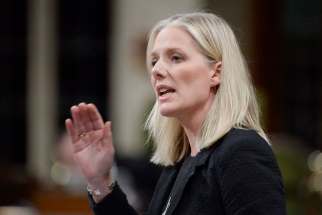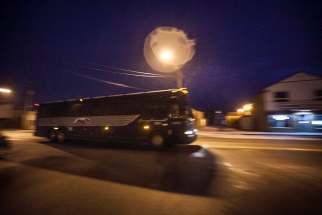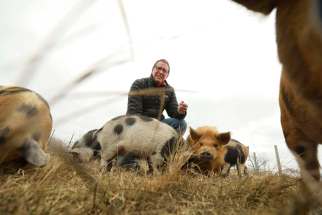‘A place to exhale’ Retiring FortWhyte Alive CEO helped create an urban oasis where humans can connect with nature
Read this article for free:
or
Already have an account? Log in here »
To continue reading, please subscribe:
Monthly Digital Subscription
$0 for the first 4 weeks*
- Enjoy unlimited reading on winnipegfreepress.com
- Read the E-Edition, our digital replica newspaper
- Access News Break, our award-winning app
- Play interactive puzzles
*No charge for 4 weeks then price increases to the regular rate of $19.00 plus GST every four weeks. Offer available to new and qualified returning subscribers only. Cancel any time.
Monthly Digital Subscription
$4.75/week*
- Enjoy unlimited reading on winnipegfreepress.com
- Read the E-Edition, our digital replica newspaper
- Access News Break, our award-winning app
- Play interactive puzzles
*Billed as $19 plus GST every four weeks. Cancel any time.
To continue reading, please subscribe:
Add Free Press access to your Brandon Sun subscription for only an additional
$1 for the first 4 weeks*
*Your next subscription payment will increase by $1.00 and you will be charged $16.99 plus GST for four weeks. After four weeks, your payment will increase to $23.99 plus GST every four weeks.
Read unlimited articles for free today:
or
Already have an account? Log in here »
Hey there, time traveller!
This article was published 02/11/2018 (2597 days ago), so information in it may no longer be current.
When Bill Elliott began his career at FortWhyte Alive in 1983, he was getting in on the ground floor of something special.
Mind you, it took a little imagination to see it that way back then. First, it was the vision of Don Muir and Alan Scarth, who saw the potential of an exhausted Canada Cement clay quarry as a habitat for waterfowl. Then, it was the vision of Elliott, who took a chance on a job ad 35 years ago and helped grow FortWhyte Alive into the multifaceted education and recreation facility it is today as its president and CEO.
Back then, though, The Fort Whyte Nature Centre, as it was then known, was a bit more… spartan. “I think my office was a card table, and the interpretive centre was just being finished,” says Elliott, for whom FortWhyte Alive has become a second home.
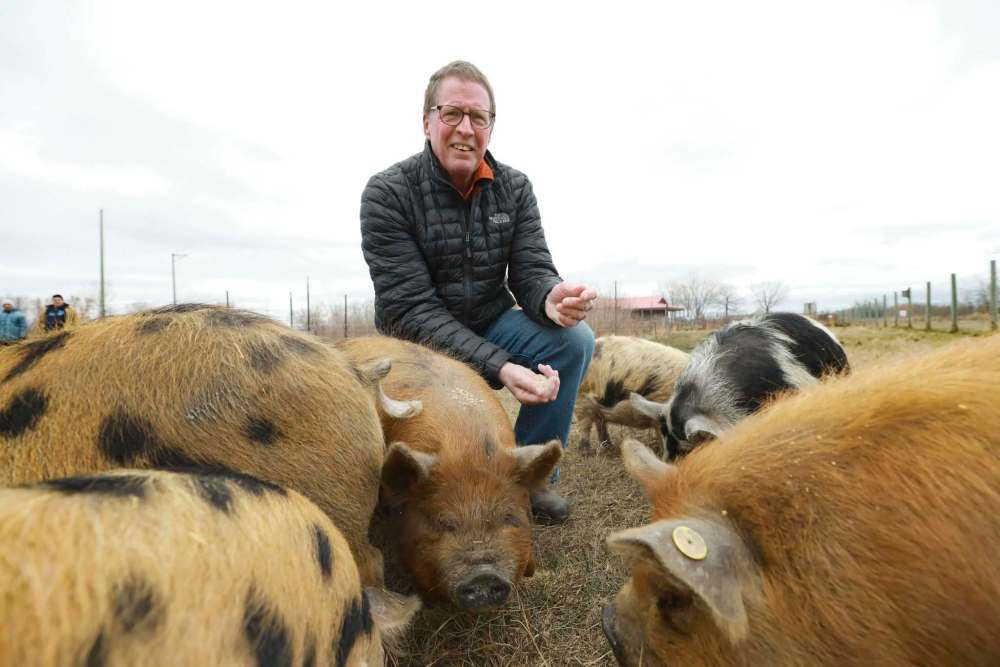
And, for a time, it was his home. During that first year, Elliott lived in an apartment right on site with his wife, his two young sons and the family dog.
“I’d do it again in a heartbeat. Living here, I was the chief cook and bottle washer. I knew the sounds and smells of the property. I learned the building and the property because I lived here,” he says.
“On the other hand, we had some funny moments when some public would walk into our living room thinking it was an exhibit.”
Elliott, now 67, is reminiscing. It’s his last week at work. After 35 years, he’s retiring, handing the reins over to Liz Wilson, FortWhyte Alive’s new president and CEO, as of Nov. 1.
“I’ve had an unsettling last four weeks leading up to this,” he admits.
It’s been strange to pack up his office. It’ll be stranger still to have someone else sit in his chair. Don’t misunderstand: Elliott planned to step back in 2018, and he’s thrilled about his successor. Still, it’s strange.
“It’s going to be odd to see the place continue to grow without having an opinion, but that’s OK,” he says. “I’ve had a wonderfully fortunate run here, totally in line with my interests. Not many people can say that.”
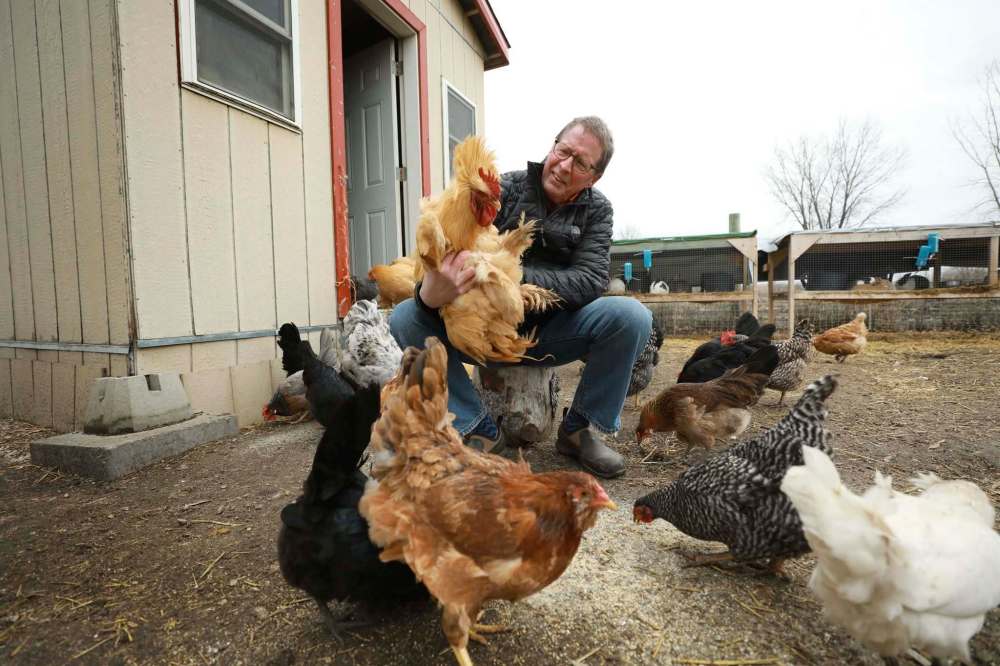
Elliott’s interest in wildlife and nature began when he was a boy growing up in St. James, feeding the birds and spending time on the banks of the Assiniboine River. “That’s kind of what FortWhyte is doing now. We’re giving youth and adults the chance to be inspired and connect with the natural world. The seed was planted very early for me.”
And it didn’t take long for the general public to see what he saw in FortWhyte. Two years after his start date, Elliott says the original nature centre was seeing 100,000 visitors a year and was quickly outgrowing its space. Environmental issues were starting to get on the public radar. Beyond that, “people want to get away from their own piece of the planet, their backyard or neighbourhood, and get into something with a little more elbow room and just exhale a bit,” he says. “This is a great place to exhale.”
Indeed, FortWhyte Alive has become a refuge, particularly for city folk who don’t have access to lakes or cottages. It’s 668 acres of protected greenspace, but it’s not overly manicured. It’s a slice of wild beauty in the city — a city that has grown up around it at a quick clip, with the development of Sterling Lyon Parkway and Kenaston Boulevard and its attendant businesses and neighbourhoods.
And so, too, has FortWhyte Alive grown. It’s much more than a nature-education destination for field-tripping grade schoolers. FortWhyte Alive’s mandate is to connect humans to nature, which it does, in part, through a slate of programming that includes bison safaris, birding, orienteering, goose flights, meditation, hatchet throwing, yoga, open-fire brewing, to name just a few of the activities on offer. Events such as the Lake Shaker parties and the Great Escape — essentially a summer camp for adults — are perennial sellouts, attracting the millennial set.
“We’re not fulfilling our mission if we don’t get the human animal out here,” Elliott says.
FortWhyte Alive is also exploring other avenues of human-nature connection, including through social enterprise. A leader on this front is FortWhyte Farms, a working farm/employment and education centre that operates on site and uses small-scale, sustainable urban agriculture to engage and empower youth.
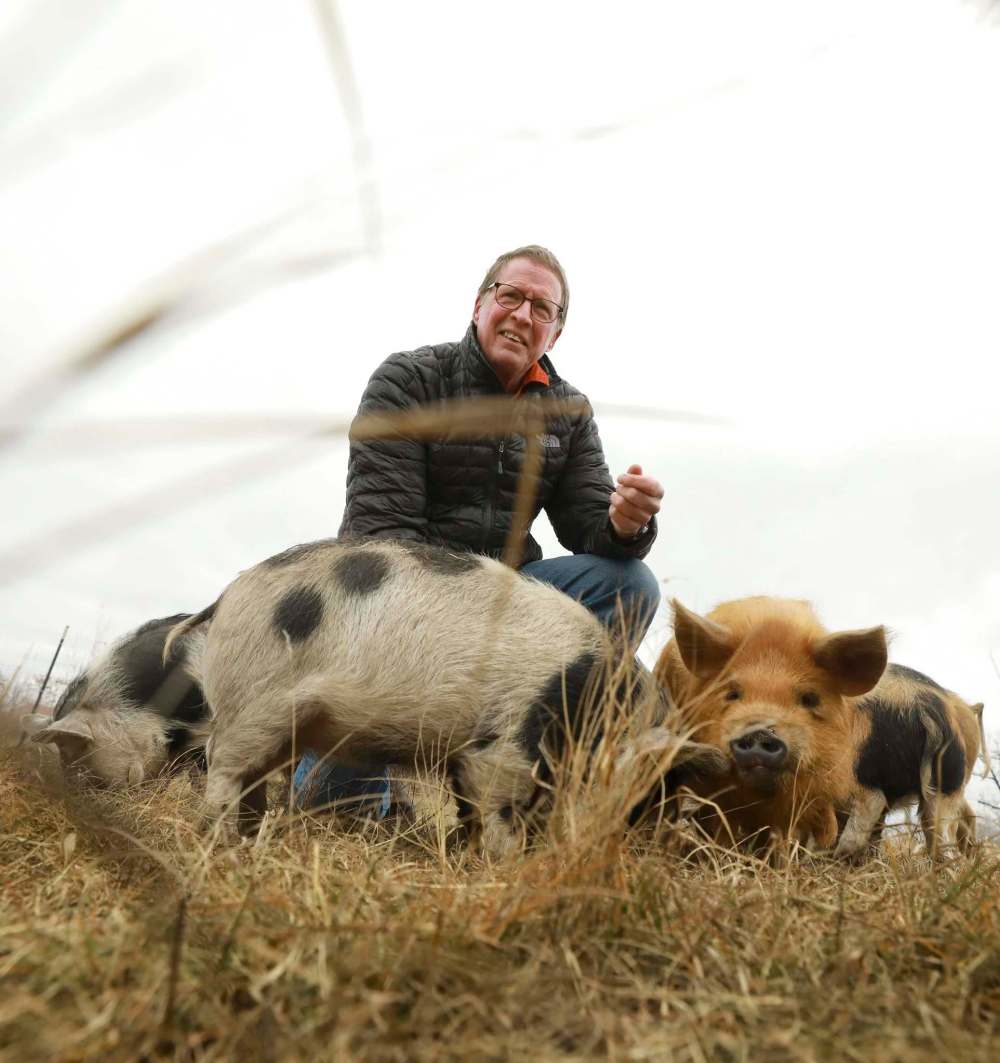
“Not to make them farmers, but to use that as a platform to build life skills,” Elliott says. “It’s a pretty cool project I’m very proud of and inspired by every time I drive to and from work and see the kids working the fields or feeding the pigs.”
When FortWhyte Farms began in 2003, it was “a small apiary and a hot plate.” Now, it’s Winnipeg’s largest urban farm with a classroom, farmer’s market area, commercial kitchen, a solar cold-climate greenhouse, a new woodworking studio, a year-round chicken coop, two acres of vegetables and a medicine garden — as well as pasture-raised chickens, pigs, rabbits and bees. A farmers market runs twice a week in the summer, and the farm also operates a community-supported agriculture program.
FortWhyte Farms works with youth-serving agencies and high schools who identify students who would benefit from an experiential outdoor program in food and agriculture, explains Danielle Mondor, farm manager.
“It’s about developing ownership, working as a team, gaining employment skills, taking care of an animal, learning about wellness and nutrition. From that cohort, we actually hire 14 youth for the summer,” Mondor says. “It’s often their first job. We want to give them a leg up which makes getting a job offsite easier.
“This is where the social-sustainability piece of FortWhyte is really evident,” Mondor says. “Through other programs we can talk about being more environmentally mindful or reducing your carbon footprint, but this where you can actually see community being built.”
But no matter the entry point into FortWhyte Alive, the take-home messages is the same: Elliott wants people, specifically urban-dwelling people, to think about what it means to live sustainably. At a time when climate reports are increasingly dire, spaces like FortWhyte Alive feel even more necessary.
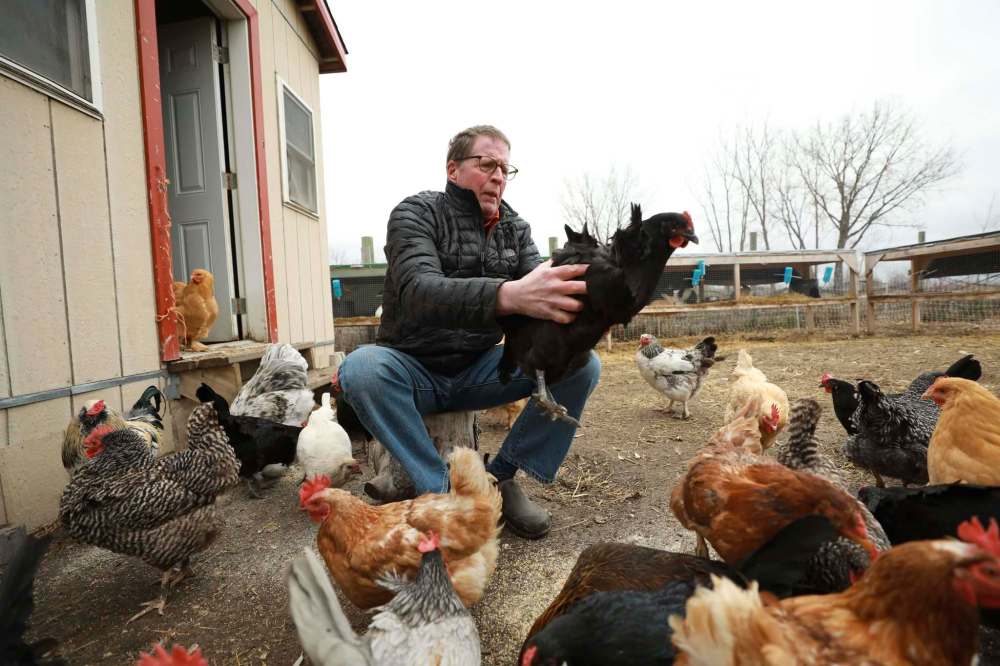
“I can’t speak for the general population, but I think, more and more, people are going to feel increasing pressure and responsibility to act,” he says. “Maybe that’s supporting FortWhyte and investing in the future generations who will feel the brunt of what’s coming. I have three grandchildren, and I hope the majority of the population feels the way I do, which is we’ve got to take responsibility for the future.
“I think FortWhyte can give people the ways and means of taking at least some action. We like to think of our programs and facilities as a menu of inspiration of people who visit.”
In 2016, FortWhyte Alive celebrated a big milestone: its 50th anniversary. Elliott was part of it for 35 of those years, and he’s quick to extend the credit for FortWhyte Alive’s growth and success. “A beautiful child like FortWhyte has a lot of parents,” he says, referring to his staff as well as FortWhyte Alive’s network of some 350 volunteers.
Saying goodbye is hard, but Elliott is filled with gratitude.
“I have so much to be thankful for in this career. I won the lottery.”
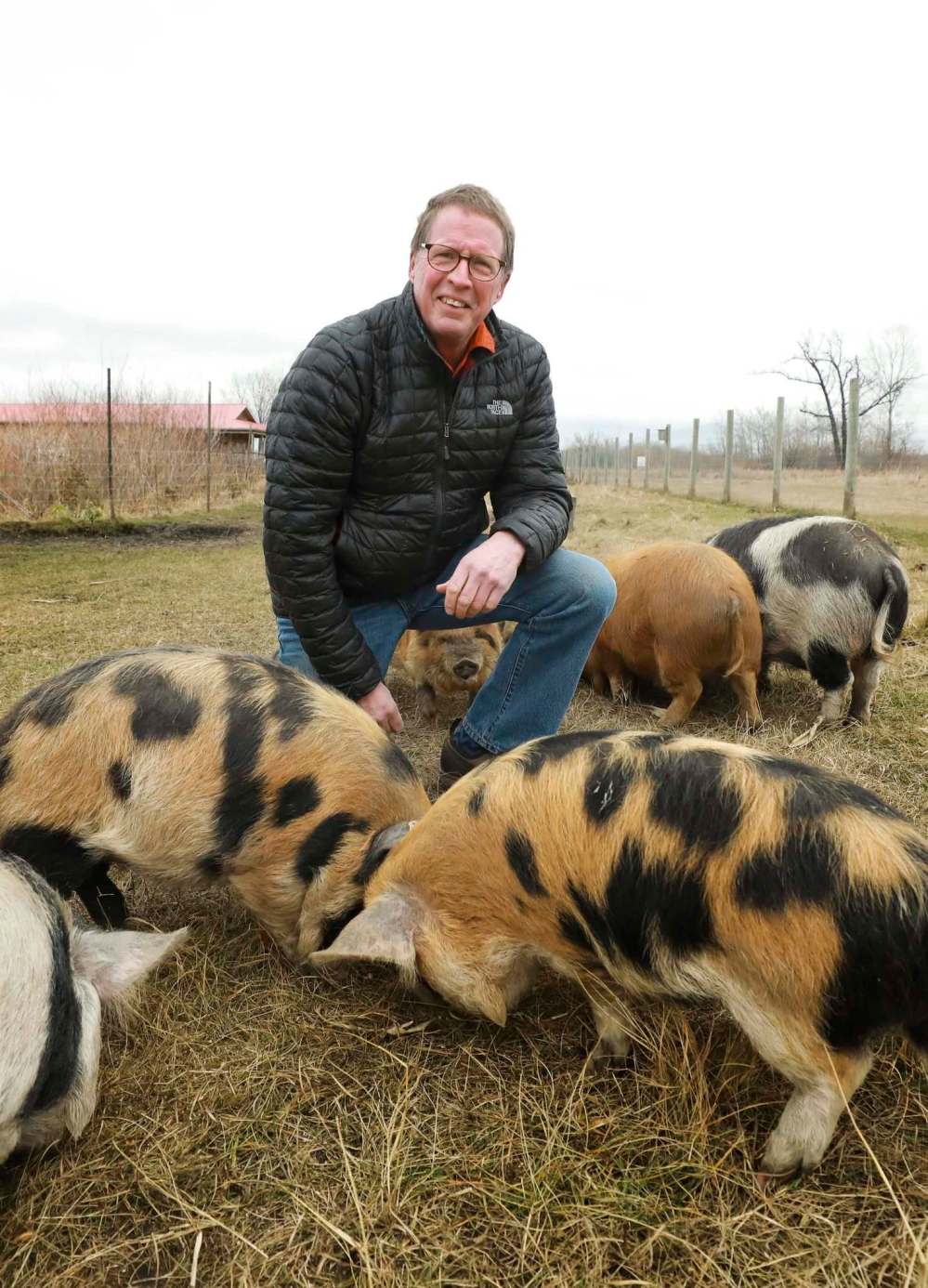
jen.zoratti@freepress.mb.ca
Twitter: @JenZoratti

Jen Zoratti is a Winnipeg Free Press columnist and author of the newsletter, NEXT, a weekly look towards a post-pandemic future.
Our newsroom depends on a growing audience of readers to power our journalism. If you are not a paid reader, please consider becoming a subscriber.
Our newsroom depends on its audience of readers to power our journalism. Thank you for your support.


